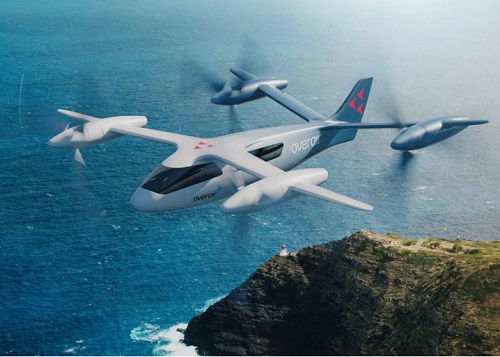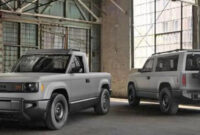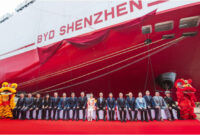The opportunity to glide above congestion in some of the globe’s most prominent cities feels like a long-anticipated glimpse into the future. Now, this futuristic concept is becoming a reality in significant urban areas like Dubai and New York. Recently, the UK’s Department for Transport (DfT) has released its Future of Flight action plan, outlining plans to have the first eVTOL (electric vertical take-off and landing) taxis operational over London within two years. Here’s what to look forward to.
What’s new?
Over 150 tech firms are working on developing these vehicles, with a shared vision emerging that the flying taxis of tomorrow will resemble drones. In the last 15 years, propeller-driven drones have transformed from unstable, crash-prone gadgets into tools capable of delivering packages to remote areas and creating intricate light shows. Innovations in lithium-ion batteries, electric motors, and flight guidance software have been crucial to these advancements.
Utilizing these technologies, Joby Aviation, based in California, is developing eVTOL aircraft. Its flying taxi features six electric motors paired with tilting propellers that enable it to navigate tight spaces and achieve speeds of 200mph. It boasts a range of 100 miles on a single charge, can carry four passengers, and, at least initially, will be piloted. Compared to conventional vehicles, it has a smaller carbon footprint, producing no exhaust emissions, and operates almost silently. Guy Norris, an editor at Aviation Week, has observed a prototype, noting: “The aircraft made only a barely audible sound.”
Where will they launch first?
Similar to the rise of electric vehicles across the globe, innovation is spearheading from China. Last year, drone maker EHang secured approval for its flying taxi from the Civil Aviation Authority of China. The company has since taken orders for 100 of its aircraft intended for sightseeing and shuttle services above Hefei, and is also working on a pilotless version.
In the UK, Vertical Aerospace, headquartered in Bristol, is leading the charge with £37 million in government funding to finalize the development of its five-seat eVTOL flying taxi. This project has successfully passed the design approval stage with the UK’s Civil Aviation Authority (CAA) and aims to begin testing above London by 2026, with potential sites for ‘vertiports’, where flying taxis can take off and land vertically, currently being evaluated.
Within London, “there are companies examining the possibility of utilizing rooftops,” states Will Nathan from Vertical Aerospace. In November 2023, Joby Aviation completed its inaugural test flight of a flying taxi over New York, taking off from Manhattan — potentially reducing the typical one-hour trip to John F. Kennedy International Airport down to seven minutes, according to Joby. The company claims it’s on track to launch the first commercial passenger service next year and has recently entered a six-year exclusive agreement with Dubai’s Road and Transport Authority for a launch in the Emirate by 2026.
What safety protocols will flying taxis implement?
The two primary obstacles they need to conquer are gaining passenger trust and securing full approval from safety authorities like the CAA and the US’s Federal Aviation Authority. A report by aviation safety experts Ebeni from March 2024 states: ‘Li-ion batteries can catch fire, especially after sustaining damage or during high charging rates. Flying at low altitudes and in urban settings increases the chances of bird strikes, so manufacturers must factor in the implications of damage (particularly around batteries and lift thrust mechanisms).’ EHang highlights the inclusion of ‘back-up systems for all critical flight components’ in its flying taxis, ensuring that if one element fails, another can take over.
Will they be reasonably priced?
Initially, it’s probable that they will not be, with production expenses around £1 million per aircraft. Although some eVTOL companies are already advertising low fares, it’s expected that the earliest services will serve a similar market to that of helicopters, likely providing transport for first-class airline passengers between major airports and urban centers — just in a quieter manner with lower emissions. However, similar to the widespread adoption of many rapidly progressing technologies, it’s reasonable to expect that increased supply will eventually allow all of us to summon a flying cab in the future.
When the revolution of electric air taxis arrives, you likely won’t hear them approaching. A striking aspect of electric vertical takeoff and landing (eVTOL) aircraft is their quiet operation, barely audible amid the usual sounds of city traffic. Unlike helicopters, there’s no disruptive, 90-decibel “thwop, thwop, thwop.” Instead, eVTOLs utilize numerous small propellers that rotate at half the speed of a helicopter’s rotor, eliminating the bothersome low-frequency sound pulses created by large spinning blades.
Electric motors, which are quieter compared to helicopter turbine engines, also contribute to reduced noise. “The newest air taxi designs, like those from prominent manufacturers such as Joby and Archer, achieve a 20- to 25-decibel decrease in noise compared to helicopters,” states Mark Moore, the innovative engineer who directed the development of NASA’s X-57 Maxwell electric airplane. This implies that eVTOLs could be four or five times quieter for nearby observers. In addition to providing quieter flights, these advanced machines are expected to be notably safer, more environmentally friendly, and more economical than helicopters. Moore argues that electric air taxis are particularly well-suited for what the aviation industry refers to as urban air mobility (UAM) services, allowing typically congested travelers to “utilize the third dimension to escape the traffic on the ground.”
In the last decade, more than twenty-five significant eVTOL manufacturers have been established, with a few approaching commercial certification from the U.S. Federal Aviation Administration or its European counterpart, the European Union Aviation Safety Agency (EASA). Each organization is developing its own unique aircraft design, but they all share a common objective: to offer on-demand air trips lasting no longer than 18 to 25 miles—the ideal range for the first generation of battery-electric eVTOL taxis. These short, high-speed flights could transport commuters between city centers and airports or handle cargo and package deliveries. Military forces may seek eVTOLs for evacuation of casualties or logistical support. Other possible applications include air ambulances, delivery of donor organs, police transport, scheduled shuttles, ecotourism excursions, and, naturally, personal flying vehicles.
In 2016, Moore, who co-founded Uber Elevate—a division of the ride-sharing company focused on air taxis—along with his colleagues, defined the fundamental business model for this burgeoning industry in a crucial white paper titled “Fast-Forwarding to a Future of On-Demand Urban Air Transportation.” This document energized the emerging UAM sector by affirming that the necessary technology was finally available. “What had once been science fiction” was quickly transitioning into a viable business, Moore remembers. Uber Elevate subsequently brought together potential participants, including new airframe manufacturers, airline companies, automotive manufacturers, transport service providers, and possible investors and operators of new vertiports—airports designed for vertical-lift aircraft.
Substantial funding agreements involving Silicon Valley billionaires and large corporations ensued, with over $1 billion raised in just the first quarter of 2020. However, after a tumultuous time of hype and overexpansion, Uber’s air taxi initiative crashed that same year, forcing the company to sell its Elevate division to Joby Aviation, an electric aircraft firm located in Santa Cruz, California. By that time, though, the electric air taxi sector had formulated a coherent business strategy based on a feasible technology: distributed electric propulsion.
In distributed electric propulsion, multiple small electric propulsors (individual propellers, each powered by its own electric motor) are strategically placed along the wings, tail, or fuselage, where they work together to produce thrust, lift, and control forces. “What’s essential is that they enable innovative rotorcraft designs to comply with noise and emissions standards in urban environments,” explains aviation pioneer John Langford, former CEO of Aurora Flight Sciences, a Virginia-based company that developed several early electric aircraft and eVTOLs, primarily for the Pentagon.
The advantages of this propulsion method extend beyond noise reduction. Numerous propellers provide safety redundancy that traditional helicopters, which typically have only one or two rotors, cannot offer, Moore explains. If one propulsor fails, the others can shoulder the burden. Furthermore, in contrast to helicopter turbine engines that emit fossil fuel exhaust, he notes, “electric motors produce low or zero emissions.”
However, the engineers and designers working on these aircraft couldn’t simply replace turbine engines with electric motors. “Switching to electric power would often result in reduced performance,” Langford observes. “The low energy density of batteries means that electric aircraft excel in short-range missions—usually under 200 miles, and often significantly shorter.” Nevertheless, he adds, the high efficiency and low maintenance requirements of eVTOLs can contribute to lower operational costs, which is a significant appeal for proponents of electric air taxis.
The primary consideration in all designs is to reduce weight to avoid straining the batteries—the most vulnerable component in eVTOL systems—especially during takeoff and hovering phases. A number of current eVTOL aircraft are being optimized to substitute 60- to 90-minute car journeys with 10- to 20-minute air taxi flights at approximately 150 mph. This is why almost all air taxi models utilize lightweight carbon-composite airframes.
Air Taxi Classification
Given the hundreds of different air taxi vehicles being developed globally, it is helpful to categorize them based on their general designs. Tom Muniz, the chief technology officer of Archer Aviation in San Jose, California, is well-positioned to offer such a classification of air taxis. He has extensive experience from several eVTOL projects, including Zee.Aero, Kittyhawk, and Wisk Aero, the last of which is now owned by Boeing.
“The most basic category is the multicopter eVTOL,” Muniz states. “They are similar to conventional drones with multiple lift propellers but lack wings, which limits their range and speed.” Muniz points out that, because wings can create high aerodynamic lift forces quietly, multicopters tend to generate more noise than other formats.
Germany’s Volocopter and China’s EHang are two companies producing small multicopter-type eVTOLs. At the forthcoming Summer Olympics in Paris, Volocopter plans to transport passengers among five newly constructed municipal vertiports using its two-seat VoloCity demonstrator. Meanwhile, the Civil Aviation Administration of China has recently approved EHang for mass production of its pilotless EH216-S eVTOL, which operates autonomously and can carry two passengers.
Following in terms of technical sophistication are the “lift-and-cruise” designs. These aircraft integrate the multicopter format with the traditional fixed-wing airplane structure, allowing for extended ranges and greater speeds. Typically, an array of upward-facing propellers located around the aircraft provides vertical lift during takeoffs. Subsequently, one or more fixed pusher propellers at the rear propel the vehicle forward, transitioning to energy-efficient wing-based lift, Muniz explains. When it’s time to land, the lift propellers resume control.
The CityAirbus NextGen eVTOL prototype from Airbus UAM, a division of the European multinational aerospace firm based in Germany, is a new lift-and-cruise air taxi anticipated to fly in late 2024. It accommodates a pilot and three passengers, boasting a maximum range of 50 miles and a cruising speed of 75 miles per hour. Another lift-and-cruise eVTOL is the recently certified 4,400-pound, five-seat Prosperity from AutoFlight, located in Shanghai. Earlier this year, a prototype completed a 20-minute intercity flight between Shenzhen and Zhuhai— a journey that requires three hours by car.
An interesting competitor among the latest air taxi designs is not an eVTOL but an eSTOL—an electric (or extreme) short takeoff and landing aircraft, which is under development by Electra.aero, a venture of Langford based in Manassas, Virginia. Electra’s two-seat, hybrid-electric eSTOL prototype, the EL-2 Goldfinch, resembles an agile, slow-flying crop-duster aircraft. The Goldfinch has recently demonstrated that it can safely operate from an airstrip less than 170 feet long—significantly shorter than the requirements for a conventional fixed-wing aircraft. (For reference, a fully loaded Cessna 172, a common small plane, typically needs about 960 feet of runway.)
“Goldfinch is equipped with eight electric propellers along the leading edge of the wings that greatly enhance lift by blowing air over the wing, raising the effective airspeed and thereby increasing the aerodynamic lift produced,” explains Langford, adding that this additional lift “facilitates ultrashort, low-speed landings.” Along with large wing flaps that extend similarly to those on airliners, combined with an oversized horizontal tail stabilizer for control, Electra’s “blown-lift” eSTOL prototype is setting the stage for a nine-passenger commercial variant. This larger aircraft, Langford asserts, should be capable of operating from 295-foot-long fields—a configuration that could fit at some of Manhattan’s current riverside heliports.
Joby and Archer
A more intricate form of the lift-and-cruise eVTOL is the “vectored thrust” type, where articulated propulsors can tilt to deliver either vertical or horizontal thrust as required, explains Muniz from Archer. He highlights his company’s Midnight vehicle and Joby Aviation’s S4 2.1 eVTOL as key examples.
Archer’s Midnight, a 6,500-pound vehicle that accommodates a pilot and four passengers, includes a dozen forward-facing electric propellers on the wings and tail. Six tilt propellers offer lift for vertical takeoff and landing, as well as thrust for forward flight, while six fixed lift propellers are engaged only during vertical flight. The company claims this vehicle can achieve speeds of up to 150 mph. Joby’s eVTOL, known as S4 2.1, is a 4,800-pound aircraft that carries a pilot and four passengers, powered by six tilting propulsors. It has a maximum speed of 200 mph.
Both firms have become part of the U.S. Air Force’s AFWERX Agility Prime initiative, which is allocating hundreds of millions of dollars to secure air taxis for assessment and testing by NASA engineers. Last September, Joby provided its initial production prototype eVTOL aircraft to Edwards Air Force Base, according to Didier Papadopoulos, the president of the company’s aircraft OEM (original equipment manufacturer).
Joby’s business model, which relies on Uber’s vast ride-hailing data, posits that air taxis must operate at approximately $3 per passenger mile to achieve profitability. Papadopoulos mentions that Joby aims to run all day with just six- to eight-minute breaks to switch passengers and recharge batteries. Given the strict cost considerations and unique requirements, he notes that the company’s engineers are creating all the aircraft’s components in-house. This vertically integrated supply chain stands in contrast to Archer’s more economical approach, which incorporates numerous off-the-shelf components, as stated by Muniz, with the exception of motors, batteries, and control systems. In addition, while Archer has opted for Tesla-tested “automotive-style” cylindrical lithium-ion batteries, Joby has reportedly chosen a lithium-nickel-cobalt-manganese-oxide battery pack that utilizes lighter and more compact pouch cells.
Moore perceives the two differently sourced vehicles as “a Ferrari versus a Toyota Camry.” Whether either of these vehicles, or any of their various competitors, can achieve broad acceptance from the traveling public is yet to be determined.



